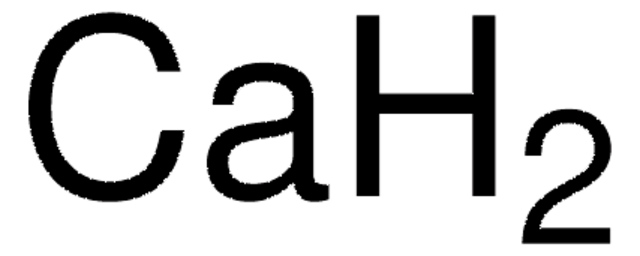Kluczowe dokumenty
940178
Manganese (II) sulfate monohydrate

≥99.9% trace metals basis
Synonim(y):
Manganese(2+) sulfate monohydrate, Manganous sulfate monohydrate
About This Item
Polecane produkty
Poziom jakości
Próba
(Complexiometric EDTA)
≥99.9% trace metals basis
Postać
powder or crystals
rozpuszczalność
water: soluble
ślady anionów
chloride (Cl-): ≤20 ppm
ślady kationów
Al: ≤10 ppm
Ca: ≤10 ppm
Cd: ≤10 ppm
Cr: ≤10 ppm
Fe: ≤10 ppm
K: ≤10 ppm
Mg: ≤10 ppm
Na: ≤30 ppm
Ni: ≤10 ppm
Pb: ≤10 ppm
Si: ≤10 ppm
Zn: ≤10 ppm
ciąg SMILES
O=S(=O)=[Mn](=O)=O.O
Opis ogólny
Zastosowanie
- Synthesizing LiNi0.6Co0.2Mn0.2O2 cathode materials for Lithium-ion batteries using co-precipitation method.
- Synthesis of layered Li–excess nickel–manganese oxides (LLNMO) via a coprecipitation method using precursor salts of NiSO4·6H2O and MnSO4·H2O.
- Creation of zirconium-doped lithium-rich layered oxide materials with porous hollow structure using salt precursors of NiSO4·6H2O, CoSO4·7H2O, and MnSO4·H2O.
- Addition to the electrolyte solution for depositing a porous Ni-P alloy thin film using an electroless process to improve the film′s properties and create an embedded resistor with enhanced electrical resistance, suitable for specific resistance values in electronic applications.
Cechy i korzyści
- Tested with ICP for confirming the requirements of purity (<=1000 ppm)
- Minimum heavy metal contents in ppm level (<=10 ppm)
- water soluble
Hasło ostrzegawcze
Danger
Zwroty wskazujące rodzaj zagrożenia
Zwroty wskazujące środki ostrożności
Klasyfikacja zagrożeń
Aquatic Chronic 2 - Eye Dam. 1 - STOT RE 2 Inhalation
Organy docelowe
Brain
Kod klasy składowania
11 - Combustible Solids
Klasa zagrożenia wodnego (WGK)
WGK 2
Temperatura zapłonu (°F)
Not applicable
Temperatura zapłonu (°C)
Not applicable
Wybierz jedną z najnowszych wersji:
Certyfikaty analizy (CoA)
Przepraszamy, ale COA dla tego produktu nie jest aktualnie dostępny online.
Proszę o kontakt, jeśli potrzebna jest pomoc Obsługa Klienta
Masz już ten produkt?
Dokumenty związane z niedawno zakupionymi produktami zostały zamieszczone w Bibliotece dokumentów.
Nasz zespół naukowców ma doświadczenie we wszystkich obszarach badań, w tym w naukach przyrodniczych, materiałoznawstwie, syntezie chemicznej, chromatografii, analityce i wielu innych dziedzinach.
Skontaktuj się z zespołem ds. pomocy technicznej


